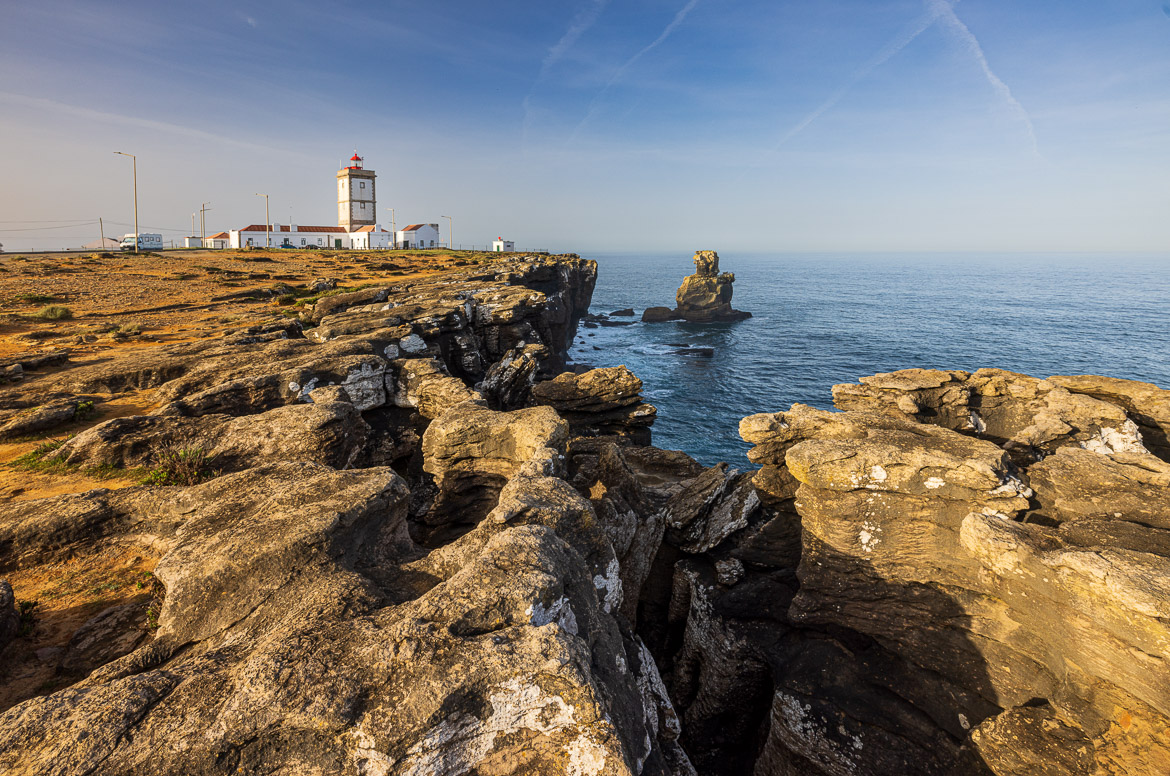
After seeing a few mountain towns near the border to Spain, we returned for a second visit to our friends Siggi and Katharina, but this time to their other estate near Obidos, north of Lisbon. This is not far from the sea and going west from Obidos you will soon arrive at Peniche. Peniche is a fishing town, although tourism probably now accounts for more of its income than the fishing does. It is built on a rocky peninsula and at its western end is the lighthouse (see image above) that was erected in 1790.
The sea has over centuries eroded the rocks that forms the peninsula, so you can now fine caves and tunnels in the porous stone. It is very attractive. We came there for a dinner with our friends and decided to come back at sunrise to catch the morning sun lighting up the rocks. The images below illustrate not only the rocky formations. In the background, partially hidden by the morning mist, you can see the archipelago of Berlengas, situated around 6 nautical miles offshore. Berlengas is now a nature reserve.
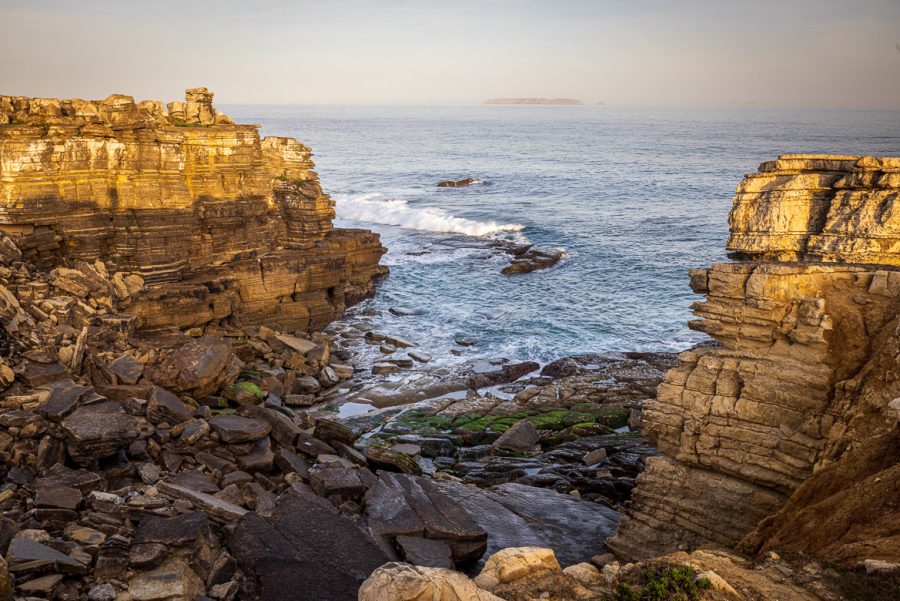
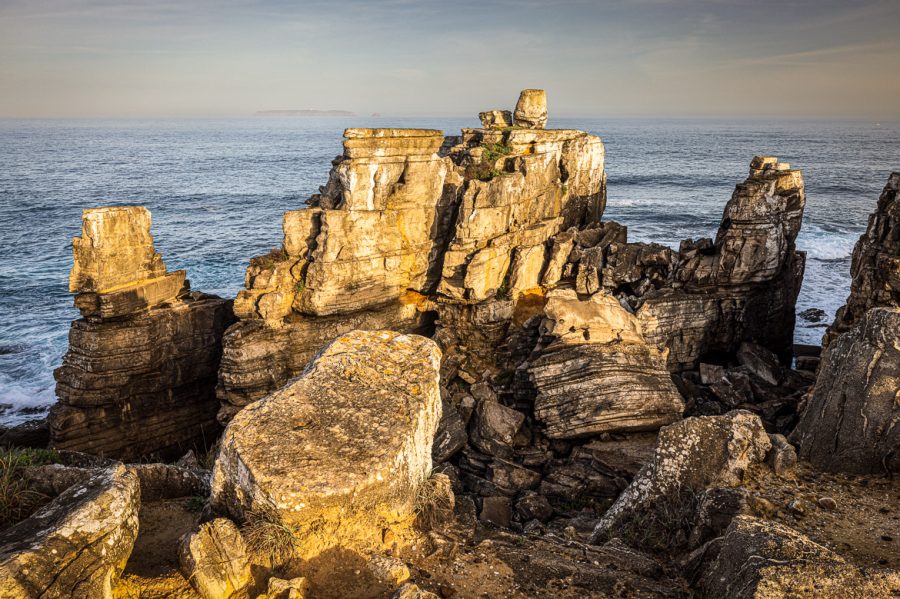
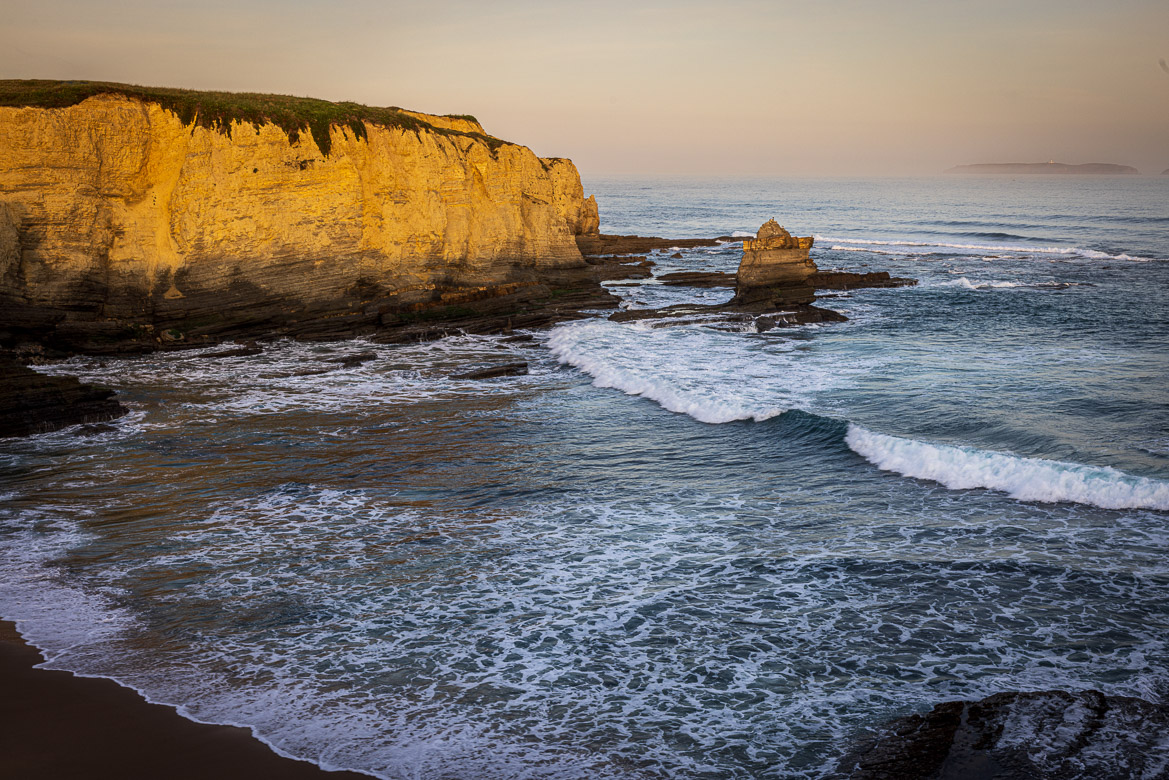
Just north of Peniche is another and much smaller promontory with a small settlement, Baleal. It has large beaches perfect for surfers. But in April we preferred to have a drink outside at a café watching the swimmers and surfers. And further north the beaches just continued for miles with only a few people present although it was the Easter holidays.
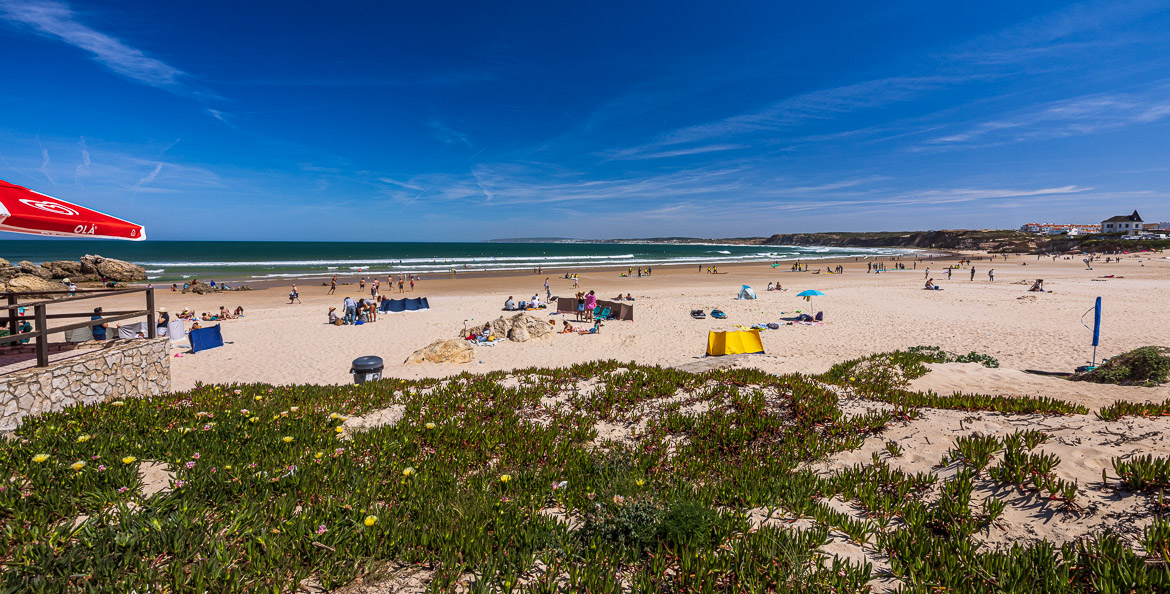
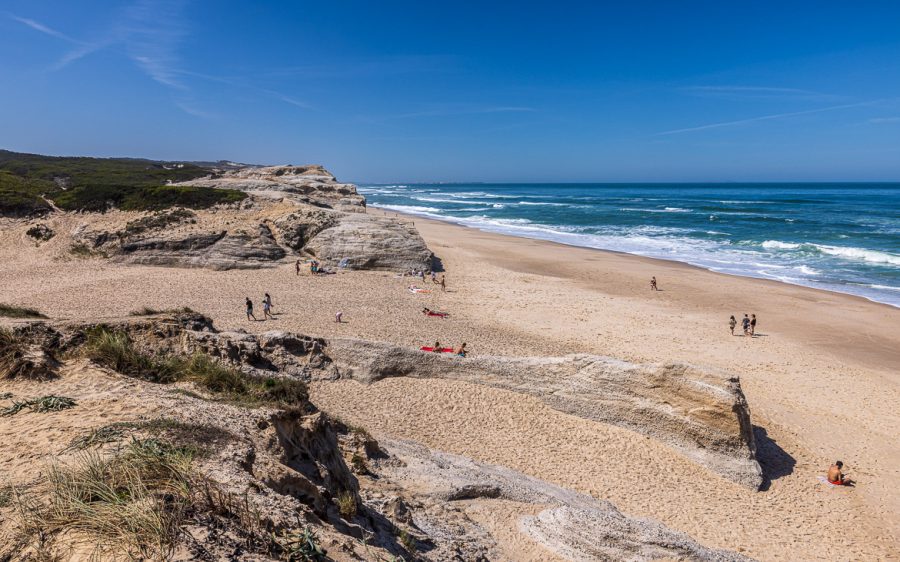
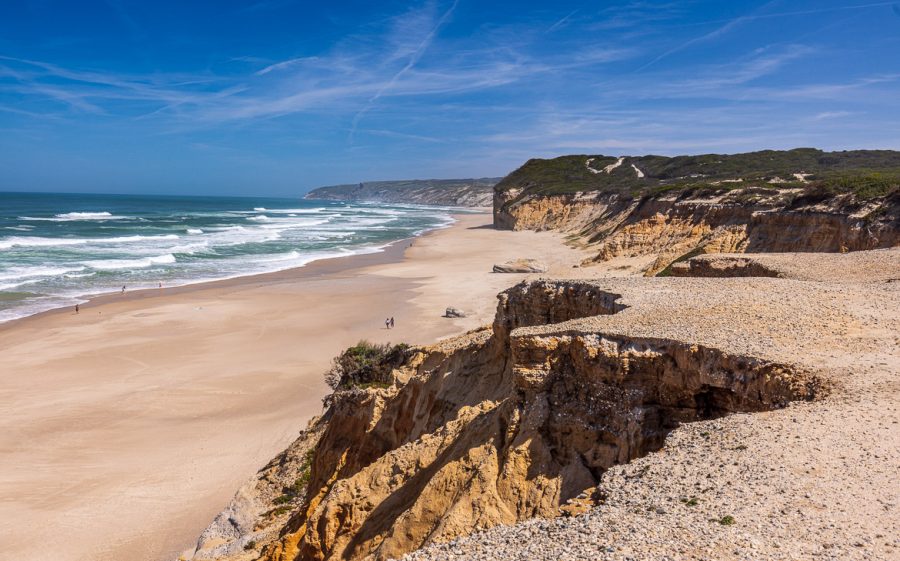
A few miles north of where the pictures above were taken there is an entrance to an extensive lagoon, Lagoa de Obidos. It is situated in a shallow depression and has a sand barrier separating it from the Atlantic Ocean outside. But the openings in the barrier are very shallow (half a metre) and every storm moves the sand barriers around, making navigation very difficult for anything but the smallest of crafts.
The original lagoon was much larger and deeper, and it was navigable by small ships all the way to Obidos, a beautiful hill town that I will show a few photos from in my next post. But in the 16th century large deposits of silt at the river delta damned up the harbour area, and the lagoon entrance and the port were destroyed. But Obidos itself remained although its importance as a port had gone.

